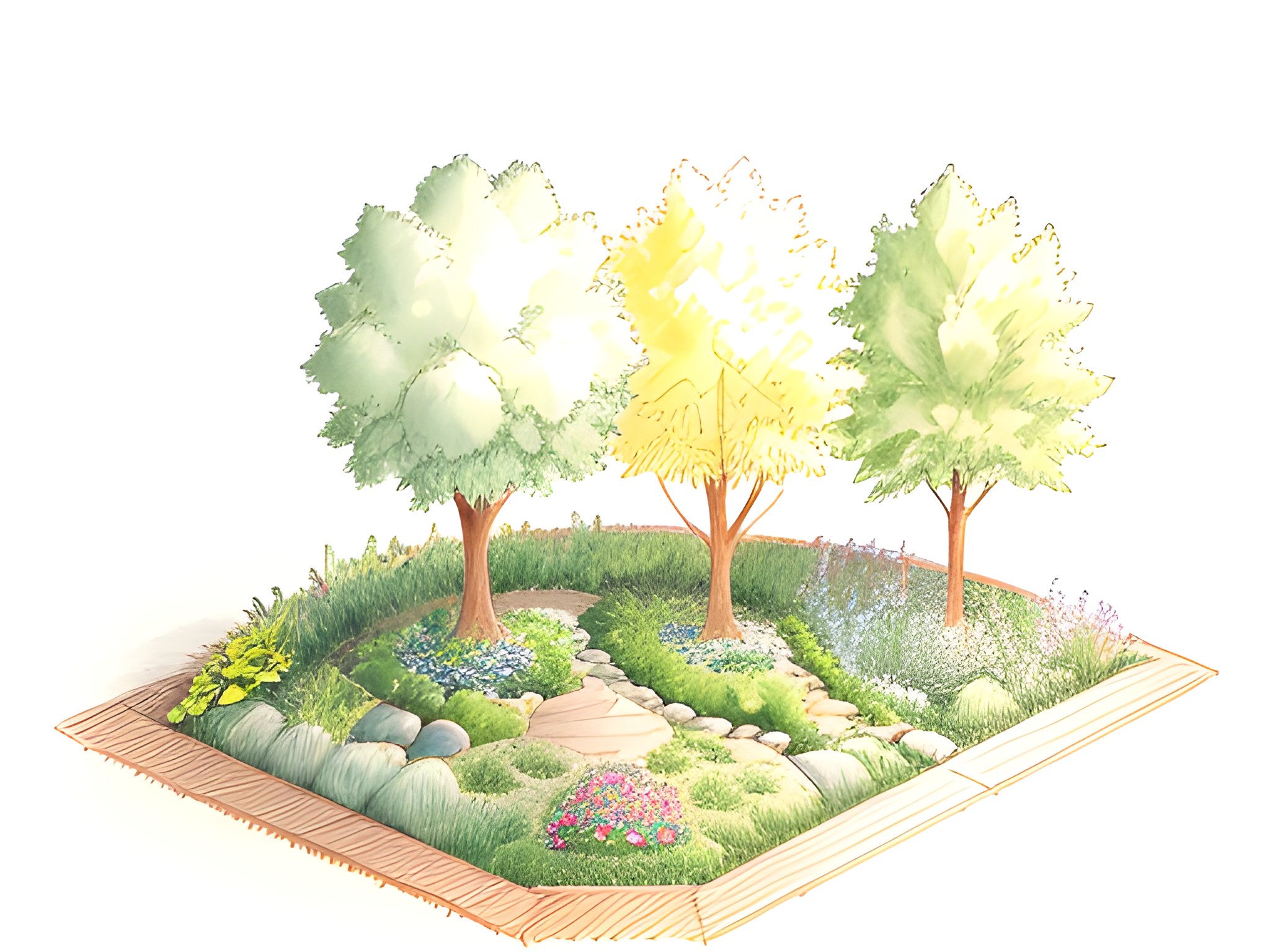Zone 2 forest gardens are always set up in the context of a close-by residence, and have few canopy trees, sometimes none. They are more diverse than zone 3 forest gardens, and they often have many paths crossing through them, for ease of harvest and maintenance, and because their position is always nearby a house, which always has paths near and around it. Hence, it is best to conceive of a zone 2 forest garden as several guilds more or less separated by paths, like islands.
A good way to start a zone 2 forest garden is as a trio of trees and a trio of shrubs, planted together. One of the trees and one of the shrubs should be nitrogen fixers That will make your first guild-island. Prepare the area beforehand using any of the methods mentioned in the previous article, but the best method for zone 2 is cardboard and woodchips. It’s best to cover the whole planting area with cardboard and woodchips, out to the tips of the outermost tree branches. If you have enough material, you can also cover the path area with cardboard and woodchips for weed suppression, although it’s not strictly necessary.
In a Russian climate, the first three trees you plant could be a birch, a plum and an apple tree, in a triangle, at a distance of 2-3 meters from one another. The birch tree, being the tallest, should be farther to the north than the other trees, if there is a need for maximum sun. If there is a need for decreased light stress, (this decreases fruiting, which is often beneficial, because it can eliminate the necessity of removing 20%-70% of the immature fruits from a tree, to avoid the branches breaking) the birch should be more to the south.
For shrubs, some good choices are raspberry, currant and sea buckthorn. Each shrub should be planted right next to a tree, between 30 and 50 centimeters. The sea buckthorn, being the most sun-loving, should go in a more southerly position, and the currant, as the most shade tolerant, should go in a more northerly, shaded position.
Within 40 centimeters of every tree and 20 centimeters of every shrub, bury a piece of comfrey root and plant one strawberry plant. Other herbaceous plants to plant in a guild-island include egyptian walking onions, daylily, jerusalem artichoke, rhubarb, burdock, kale, garlic, daffodil, iris, nettle, yarrow, plantain, mint, fennel, goutweed, gladiolus, knotweed and asparagus.
The paths within a zone 2 forest garden should be planted to a groundcover that benefits the forest garden as a whole, and also can withstand foot traffic. White clover, which fixes nitrogen, is a good choice.
I suggest planting only one or two of these guild-islands in the first season. Each year after that, you can plant one more island and add herbaceous plants to the islands that are already established. A few of the guilds may have large canopy trees such as chestnut or black locust, to decrease light stress on the fruit trees, but it’s important not to shade them too much. In the tropics, you would want lots of shade, because there is a powerful overhead sun beating straight down. So you have palms shading the shorter trees from the direct sun. But in the northern latitudes distant from the equator, for maximum yield you need to have a much more open layout.

Leave a Reply